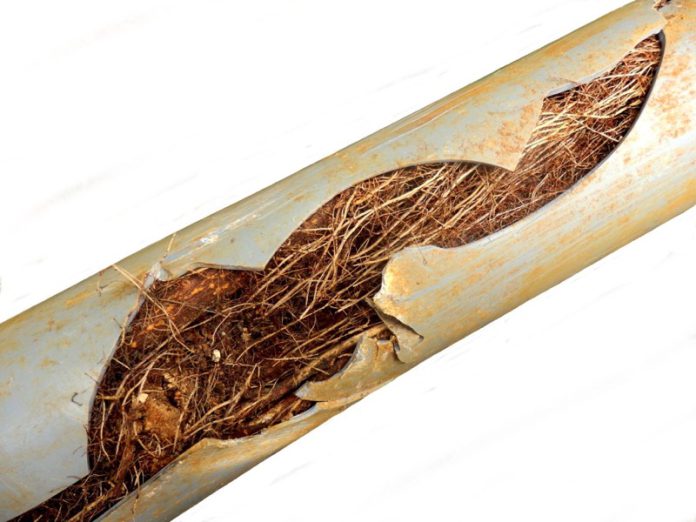While it’s important to have established trees, shrubs and hedges on your property you do need to be mindful of your underground sewage pipeline points and take note of any blockages your trees may be causing. While older pipes are most susceptible, even stronger PVC pipes with a leak if poorly installed, attracting water searching tree roots that can break through tiny cracks and imperfections. Acting early can help reduce damage and the cost of repair.
Why do tree roots block sewers?
A tree will search for water underground for growth and nourishment. If water is detected around pipes due to soft pipes, leaks, cracks or damage a tree will quickly send in fine roots which thicken and take hold. The roots will move further up the pipe to gain even more access to water, thickening as they go and allowing more roots to follow.
Signs of roots in drain pipes
It’s important to ask for help if you have a recurring blocked drain issue as you won’t be able to see the blocked pipes yourself to know the extent of damage or where the problem points are.
Some signs that your drains are blocked by tree roots can be seen both inside and outside your home with:
- The sudden appearance of sinkholes in gardens, lawns or pavers
- Greener areas of thick grass or a rapidly growing tree
- Your toilet frequently backs up
- Strong odours
- Slow or gurgling drains
DIY solutions
There are DIY solutions for helping unblock tree roots from drains by tipping down your toilet. If a treatment doesn’t work it may be because you have a different kind of blockage or the damage is too great to handle alone.
Copper sulphate
Copper sulphate treatments are easy to find and apply. You can use copper sulphate directly or buy it as a tree root removal compound from garden supply and hardware stores.
Salt
Rock salt is less powerful than copper sulphate making it suitable for septic tanks. You may need to use more to see results but please be careful as too much too frequently will kill the whole plant, not just the roots. You will need around 1 kilo of rock salt that you can buy from the supermarket or hardware store. If a DIY remedy doesn’t work, call a professional to diagnose the problem.
Professional methods
A professional plumber will be able to assess your problem from the inside to pinpoint issues and give you feedback and treatment options. Using a specialised drain camera they can see not only where the pipes are blocked but also know how your pipes are holding up. The best part about this non-intrusive surveillance method is that it can tell the whole story and flag any surrounding issues that include:
- Multiple blockage points located further inside your pipes
- Pipe condition
- Additional debris caught against the roots that may need extra treatment
Typical blockage treatments that will be recommended to you are:
Mechanical auger
Also called a rooter, a mechanical auger cuts through roots and leaves your pipes clear.
It’s a fast and inexpensive solution.
Hydro-jetting
High powered jets can blast through roots and give your pipes a thorough clean using chemicals and hot water delivered through a specialised pump.
Pipe repair or replacement
After the roots have been cleared out your plumber can get a better look at the pipe shell and see what approach is needed to keep new roots from entering. There are two main choices here for pipe relining, when the damage isn’t bad you can have a strong sleeve inserted and positioned to the weakened point to be locked in place permanently. Badly damaged or old pipes, particularly clay pipes, will need to be dug up and replaced with PVC.
While DIY methods are available they are only temporary. There may also be cracks or damage to your pipes that require additional attention before your water flow can be fully restored and to stop water seeping underground. Contact a professional to assess the damage and get a permanent solution in place sooner, rather than later.















